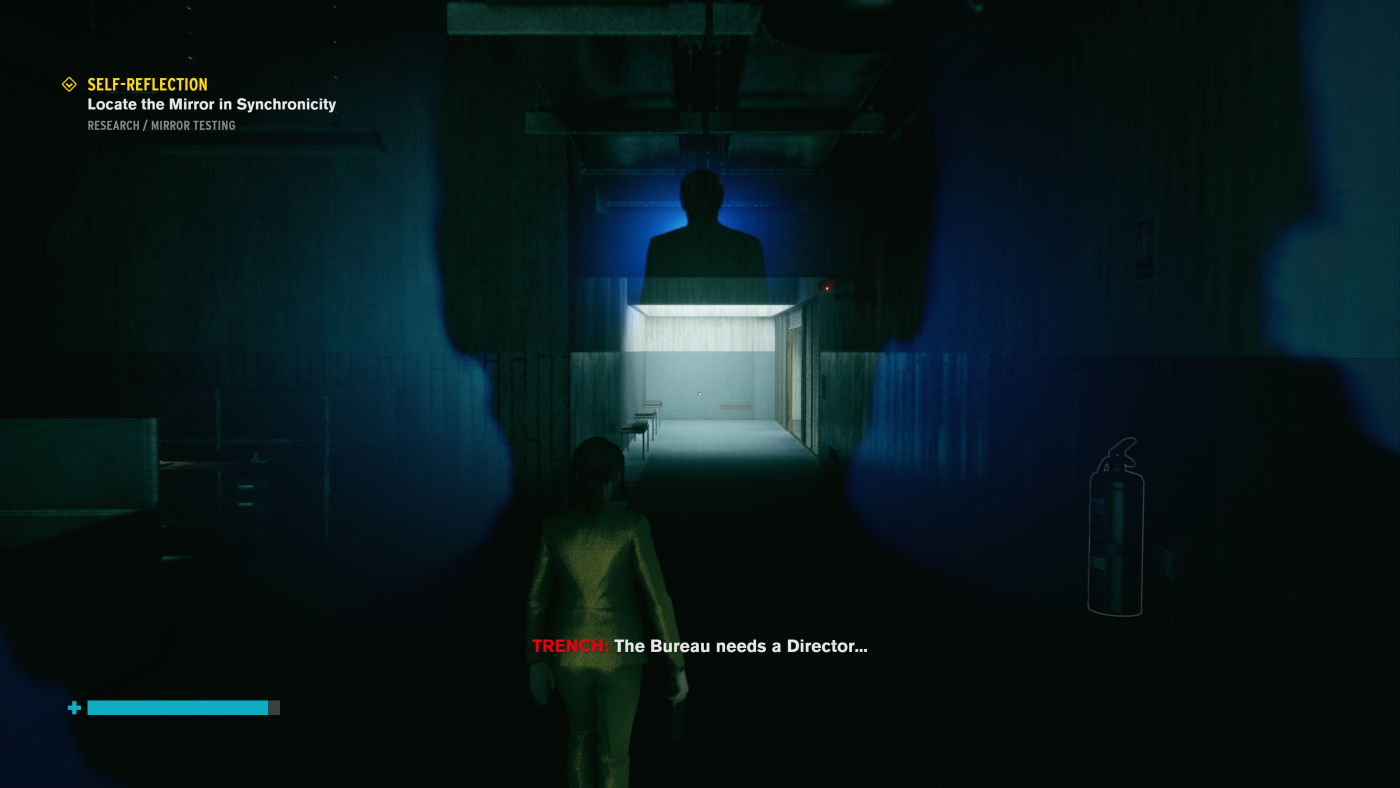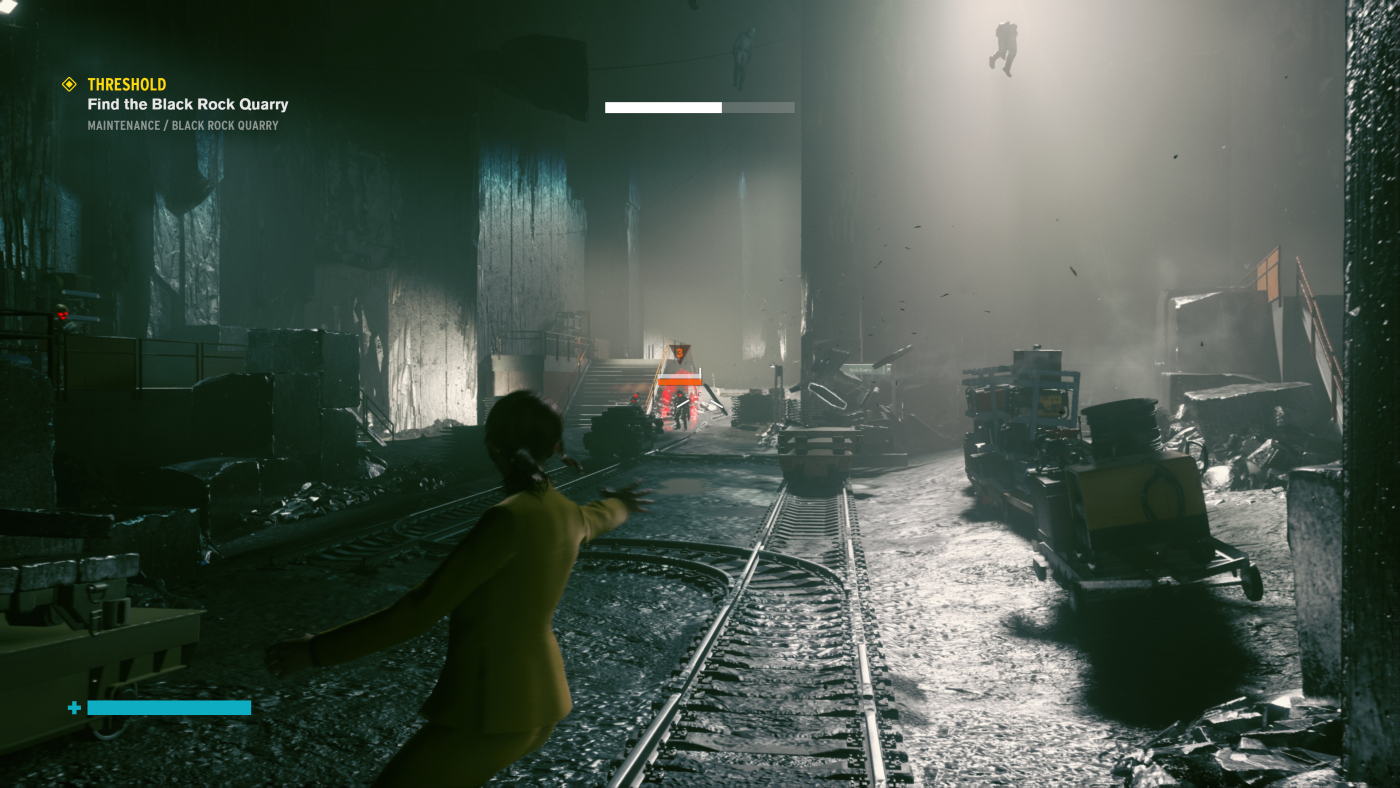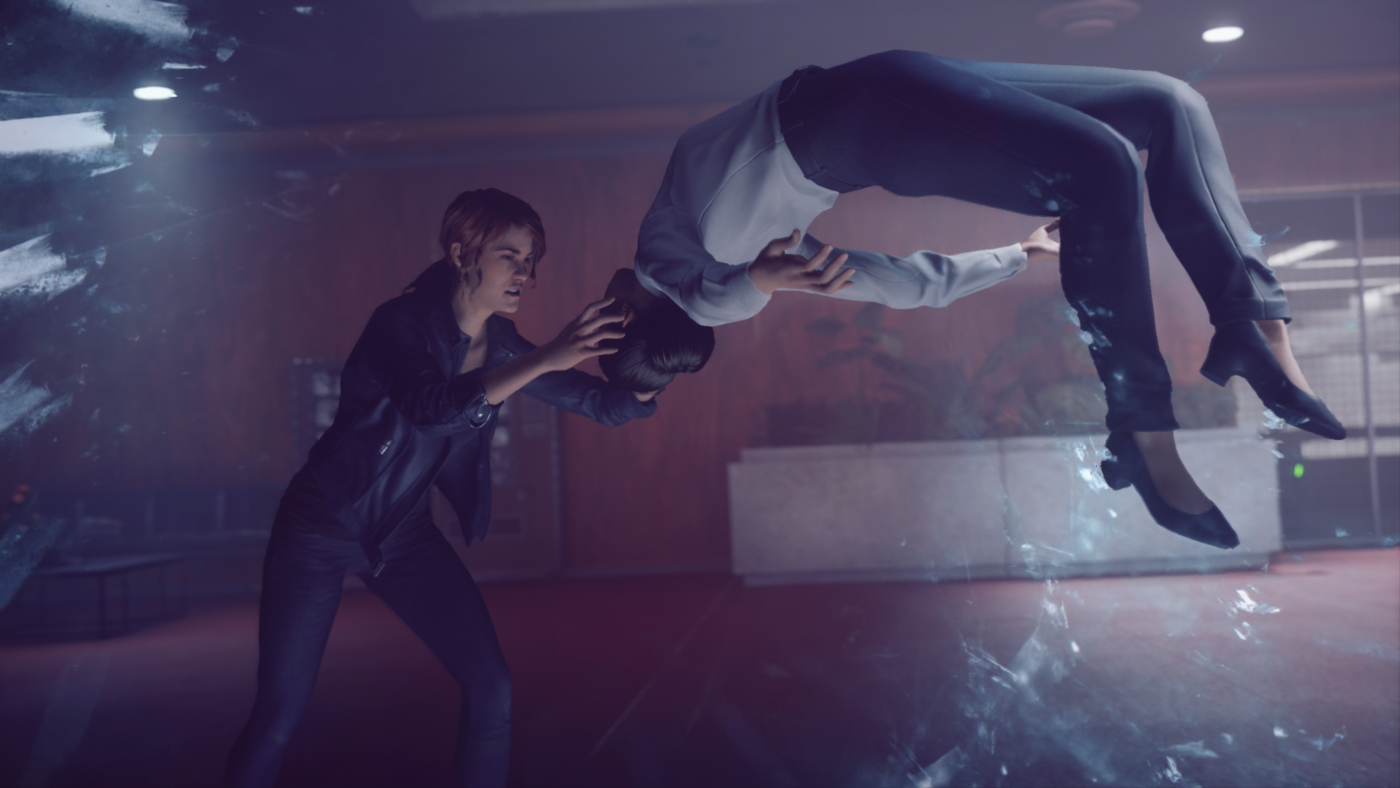Use the Force.
Remedy has been a developer to watch ever since 2001’s Max Payne, a game that revolutionized the shooter genre will bullet time and made Remedy a household name. Alan Wake, their followup franchise, would go on to be a game loved by many, and while Quantum Break didn’t set the world on fire, it was still considered to be a very solid game nonetheless. Control, the developer’s latest, feels like a combination of their past works, using the DNA from what has come before to create a truly engaging release that is hurt only by a few poor design choices and some severe technical problems.
With the busy schedule of releases approaching, I wasn’t sure if I was going to dive into Control right away, opting to try it later once this fall had calmed down. That said, curiosity got the better of me and I jumped in and I’m glad I did as while the title can be intensely frustrating at times, the overall experience I’ve had with it is largely positive. While I’ll get into the technical problems later on, as well as some choices I feel don’t quite suit the game, let’s first get into what Control really is.
You play as Jesse Faden, as portrayed by Quantum Break’s own Courtney Hope, who enters into a building called The Oldest House, which is the headquarters for the Federal Bureau of Control to track down and locate her brother, only to be almost instantly gifted the title of Director. Unwanting of this title, and its responsibilities, Jesse rides it out in the hopes it leads to her brother, Dylan. Jesse is caught between many tough choices across both paths ahead of her, often opting to do the right thing to help those in need, especially poor Philip, who I’ll leave for you to discover. For Jesse to track down what has happened to her brother all those years ago, she’ll traverse the enormous facility helping those in need and putting down extreme threats in the process. These threats, are called the Hiss, a term given to them by Jesse herself. Except, that’s not exactly true either. Jesse has a bit of a secret in regards to how she knows about the Bureau, and the creatures that roam its halls. It takes a while to understand exactly what her secret is and how it’s led her there, but it’s a very interesting one and is further explained the more the game goes on. At first, I wasn’t exactly hooked by the story, but by the time the credits rolled, I was rather impressed, even if I still was lost on some of it.
I mentioned that the facility is enormous, and frankly, it’s a bit more than that. It’s unrealistically big and this can lead to difficulty in navigating it. While the nameplates pointing you in the right direction are very helpful, the in-game map is anything but. In fact, I’ll lay claim that Control has the worst in-game map I’ve seen in well over a decade. It doesn’t allow you to swap layers, and there are often locations on the map that look connected, but are not. To make matter’s worse, check out the following screenshot to see how my map usually looks, yes, it rarely shows up. This is an issue I’ve heard on Giant Bomb’s podcast as well, and I’m running on an Xbox One X as opposed to the base model which runs the game even worse. I would say in the 15 or so hours that I’ve put into the game, my map has functioned as intended for maybe a dozen times at best, often missing huge chunks of the map itself. The nameplates prominently placed above doors and on walls are a lifesaver and frankly, worked miles better than anything the map can or could provide.
Despite getting lost far too often, exploring the Oldest House is still enjoyable mainly due to the overall combat, the in’s and out’s of how your powers will reflect that exploration, and the characters you’ll meet along the way. You’ll need certain powers to access some locations and key cards to unlock restricted doors, which I’m surprised I can’t just rip them off their hinges or that I, as the Director, for some reason don’t have access to some sort of master key. In fact, that last bit is rather funny since the medic I saved later on had more access than I did across the whole facility. In your travels, you’ll come across dozens of lore items that shed light not just on the employees that work there, but the findings of their research and just what the hell is going on. They are written very thoughtfully to provide just enough information to hint at what is going on without just flat out revealing everything you need to know. These collectibles are usually lined up with the area they are found in, providing that little bit of context to the why’s and what’s of that location. There are also countless recordings and live action videos featuring real actors, and a few puppet shows, that are wildly entertaining, and give glances at crucial character moments and world building.
While the main story is a personal one for Jesse, you’ll often get bombarded with requests of people that need your help. Whether that is tracking down mold samples for a very forward and drastically blunt scientist, talking to plants in Central Research, or helping poor Philip with his dire situation. There is a decent amount of them that can lead to special rewards like better mods for your equipment, some thrilling boss encounters, or a fancy new suit or two. I often found these distractions to be better than some of the main quests and always looked to seek them out during my travels. Even upon completing the game, I had several side quests still lined up and discovered even more quests as I kept completing those. With more content to be released in the future, I’m excited to see what’s next in store for Jesse and her world.
Once Jesse is appointed Director, she is given a supernatural handgun called the Service Weapon. This is the only weapon you’ll wield, apart from her powers, and it can learn different forms, giving you all the appeal of a mass arsenal in a single gun that transforms between two types at any given moment. You’ll unlock new forms as you progress and you can upgrade them to allow for more mods to be equipped. Mod’s range from boosting the fire rate and damage and the typical things you find in this type of system. Nothing Control does here with its weapons is really revolutionary as everything present is stuff we’ve seen before. The shooting controls and flow of combat is pretty standard and despite some moments where the camera gets in a bit too close and Jesse is blocking much of your view, there is a very hectic arrangement of dashing behind cover, or using your powers to deplete an enemies shields to allow your gun to destroy their health bar. One annoyance with the gun combat is that your gun will reload manually after a while and the X button , which is usually a reload button in most games, will swap weapons, making the muscle memory of other games really mess you up here.
As you down foes or complete objectives, you’ll be gifted materials that can be used to upgrade your weapons and craft new mods. You’ll need to upgrade your crafting as well so that the available mods are high enough level to really pack that punch or boost certain stats to a decent level. Also, as you complete side quests and main story moments, you’ll earn ability points which can be used to upgrade Jesse’s powers, often allowing new ways to use them while also boosting their overall power. This ranges from letting your shield expend its cover forward into enemies, or using levitation to ground smash groups of Hiss.
Much of Control’s advertising shows a super-powered Jesse flying and smashing objects into enemies and coming across as a modern-day Jedi, and truth be told, the power structure here is phenomenal. Hurling debris and objects at your foes, or flying into the air and ground smashing fools is wildly appealing and works rather well. You’ll learn a variety of powers, and each of them will consume large portions of your energy meter. When that energy meter depletes, Jesse has really nothing going for her to dodge out of the way or avoid incoming fire. You can’t roll out of the way of attacks and while you can run, the inability to avoid gunfire or supernatural blasts without using your ability meter is something I’m at a loss with. For as powerful as Jesse can come across, she is surprisingly weak, even despite the personal mods like extra health that you can equip to her. Jesse cannot auto-regain health and requires that you pick up shards dropped by killed enemies. While this isn’t a new system or something exclusive to the game, it can be a nightmare scenario when you’re one sliver away from dying and all the dropped health is deep in enemy territory. Had the game had a slow health regeneration system built into its upgrade tree, or maybe using telekinesis to retrieve those shards, then I feel it could have mitigated the frustration.
As you complete certain missions, you’ll discover objects of power. These grant Jesse abilities like telekinesis, dashing, levitation, forming a powerful shield of debris around her, and taking over the minds of the weak. As you level up these powers, as I’ve mentioned, you can change how they work to better suit your needs. Upgrading seize, which works like mind control, allows you to control more enemies and that the effect of using them lasts longer. Upgrading your shield makes it withstand more abuse, while upgrade your telekinesis ability allows you to start throwing enemies and much larger objects. Finding the upgrades that work for you is crucial to getting the most out of her powers and making you a force to be reckoned with.
Until you start unlocking more powers and their subsequent upgrades, Control can feel very average in respects to its combat and the options given to you. Until I started putting points in my shield and seize abilities, I was struggling with my overall take on the game. Shooting does feel nice, but telekinesis, while very enjoyable, can be a pain in the ass when your environment is blocking the view of where you’re throwing things, that or using your power blindly and then inadvertently throwing an explosive object and having it hit the pillar right in front of you. Learning how to let your gun charge up and then swapping to your powers, and then using your gun again while your powers charge is a crucial loop you’ll discover very early. There is a nice balance of combat in regards to how you’ll learn how certain enemies attack or the best ways of dealing with them. Thankfully, once you’ve learned enough abilities and power upgrades, combat starts to flow in ways the game feels like it was intended to be played. Learning how to levitate takes a while to master, and while I wish there was a way to recover from accidentally pressing the descent button, which killed me in some moments where I had to replay a massive chunk of gameplay due to the wildly spaced checkpoints in some areas. Regardless, I still think it’s one of the better flying systems in games today.
Control continues Remedy’s fascination with performance capture as nearly every character in the game with a face is adapted from a real person, limiting the need for actual character design. That’s not to say the characters are boring or not interesting to look at it, but it can become somewhat distracting, as was the case with Quantum Break, Man of Medan, and Until Dawn, where recognizing that actor can make or break the experience for you. That said, the acting and facial capture are very impressive without coming off as dipping into the uncanny valley. Control has a very distinct look to it with how it’s using colors and tones that really do give it its own visual identity. The visual effects of using your powers and causing mass explosions or seeing the Hiss implode into a flash of color is very cool, but man does it make the console versions of this game really chug. I’ve died numerous times from the framerate taking a dive into single digits, and while it doesn’t happen all the time during combat, it really is an annoyance when it does. Pausing the game or taking screenshots causes the game to almost lock up most of the time, needing a full few seconds to catch back up to a somewhat playable framerate. Control is still very playable even despite the issues here, and Remedy is currently working to address these issues.
Unless you’ve got an impressive sound system, I strongly recommend playing Control with a good set of headphones. The sound design is stunning with so many effects and sounds flooding your ears that normal tv speakers are just not going to cut it. The soundtrack itself is really well done as well, lending even more reason to embrace it as close to your ears as possible. The voice acting is top-notch, and Jesse’s vocal thoughts are fun, engaging, and often humorous, letting us into just who she is.
I was very entertained with Control without it really selling itself off as a must-play title until I was gifted a pair of headphones in the game and then presented with one of the best level sequences I’ve played in years. Not only did the soundtrack in this area offer up something wildly different to what had come before it, but the level design and pacing were also so good that even Jesse herself said “that was awesome.” when it ended. Now, that singular praise aside, Control is a very good game, even great at times, and once the performance issues are addressed, then it can really be something special. I still wish there was a way to heal without having to treat it like a suicide run, but overall I still had a blast throwing weak enemies into others, rising up into the air and then slamming into the ground with immense force. Control may feel like your traditional Remedy game with its weird stories and unique characters, but it’s the best Star Wars game in years and you can even dress Jesse up like a rampaging sith. Sweet.
Control was purchased by the reviewer and played on an Xbox One X.
All screenshots were taken on an Xbox One X.














